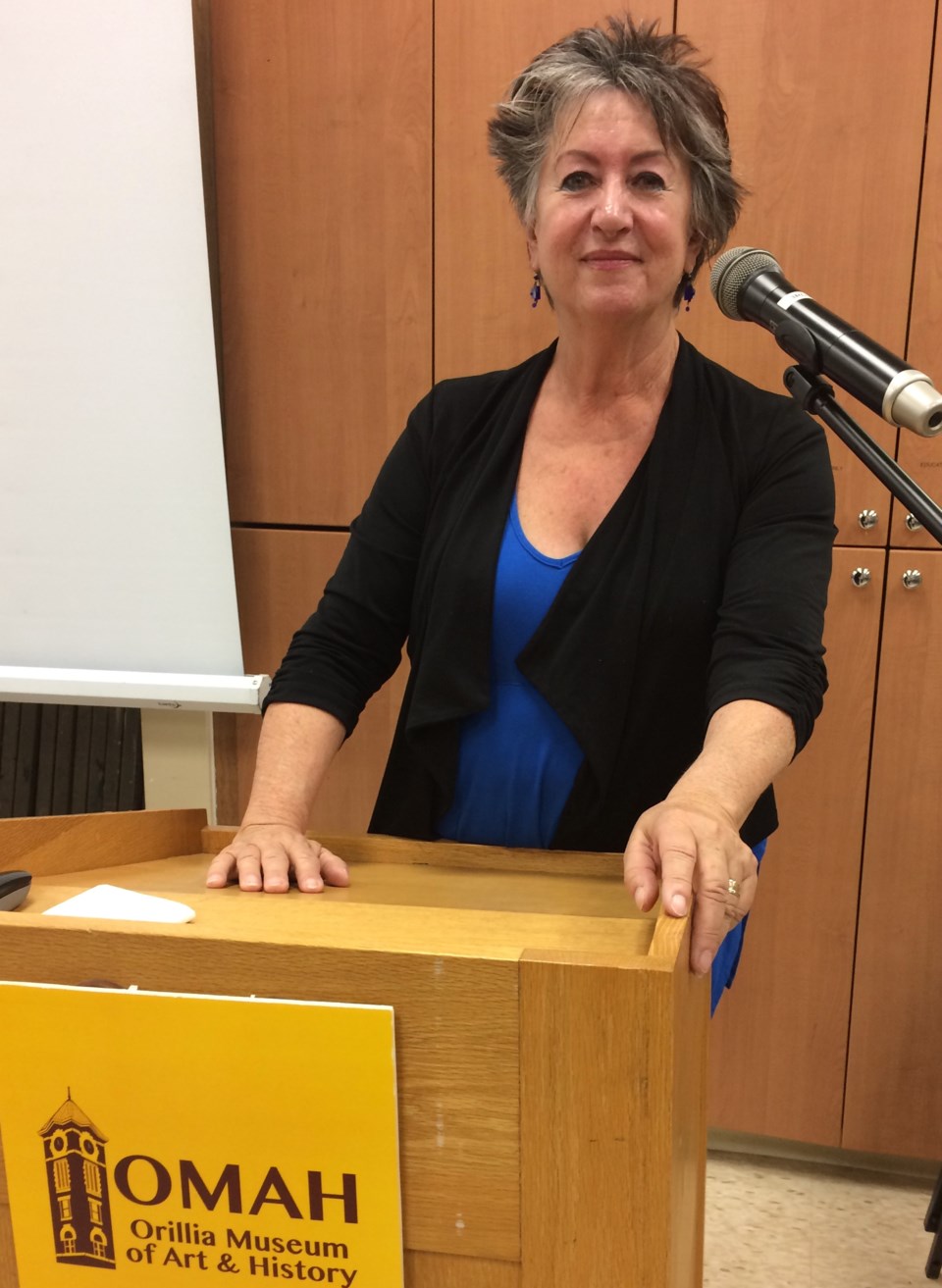NEWS RELEASE
ORILLIA MUSEUM OF ART AND HISTORY
***********************
“If your only tool is a hammer, all your problems will look like nails.” W.E. Deming.
Restorative Justice is a different way of addressing conflict and crime and has been part of Canada’s criminal justice system for over 40 years, yet little is known about it. This is no longer true for the fortunate people that attended the last History Speakers Series presentation at the Orillia Museum of Art and History (OMAH) on May 16.
Ontario Provincial Police Inspector (retired) Irena Lawrenson engaged all in a lively, frank and comprehensive presentation on the history of restorative justice around the world and in Canada. She described how she became so involved in the process and provided an update on the state of restorative justice in Canada today.
While there is no single definition for restorative justice, it is based on the principle of repairing the harm caused by a crime, involving the parties with a stake in a particular offence collectively in how to deal with the aftermath of the offence, and considering the resolution’s implications for the future. It is a three-pronged process based upon victim reparation, offender responsibility and community reconciliation.
The key is that an offender must admit responsibility for their actions before the process can begin. Lawrenson cited a few personal examples. In the one instance, the victim of a car theft wanted the offender to work in his store every weekend. The offender readily agreed and a lasting bond was created between the two.
The audience was then engaged in a bit of role-playing. People were recruited to be the judge, prosecutor, defence lawyer, accused, victim, witnesses and the media. The group formed a triangle that involved the judge, the prosecutor and the accused with their defence lawyer. In this traditional courtroom setting, the victim, who has the greatest need for emotional expression, is almost entirely left out of the procedure.
Lawrenson then arranged the same people in a restorative justice circle. This group included a facilitator, the accused or person who caused harm, the victim or person harmed and his/her supporters. Also involved was the investigating officer and other community resource people. Of note, it excluded the judge, prosecutor and defence lawyer.
The restorative justice process can be used along all stages of the judicial continuum, from pre-charge to post-charge, pre-sentence, as part of the sentence, during incarceration and post-incarceration. It can also be used in other settings such as schools, workplaces, faith communities and service clubs, and for neighbourhood conflicts, complaints against police and anywhere conflict occurs between people.
In the end, Lawrenson concluded that we want people to have a sense of self worth, to be responsible for their actions and to take control of their lives and their problems. We want offenders to stop exploiting others and being parasites on society. Restorative justice helps to provide people with the tools needed to make a positive and constructive change in the lives of the victim and the offender.
The OMAH History Speaker Series resumes on Oct. 17 with Gwen Robinson, Chair of the Coldwater Mill Heritage Foundation, presenting her talk The Coldwater Mill 1833-Then and Now. Come and hear Gwen speak about the exciting changes that the Coldwater Mill has recently undergone.
***********************
